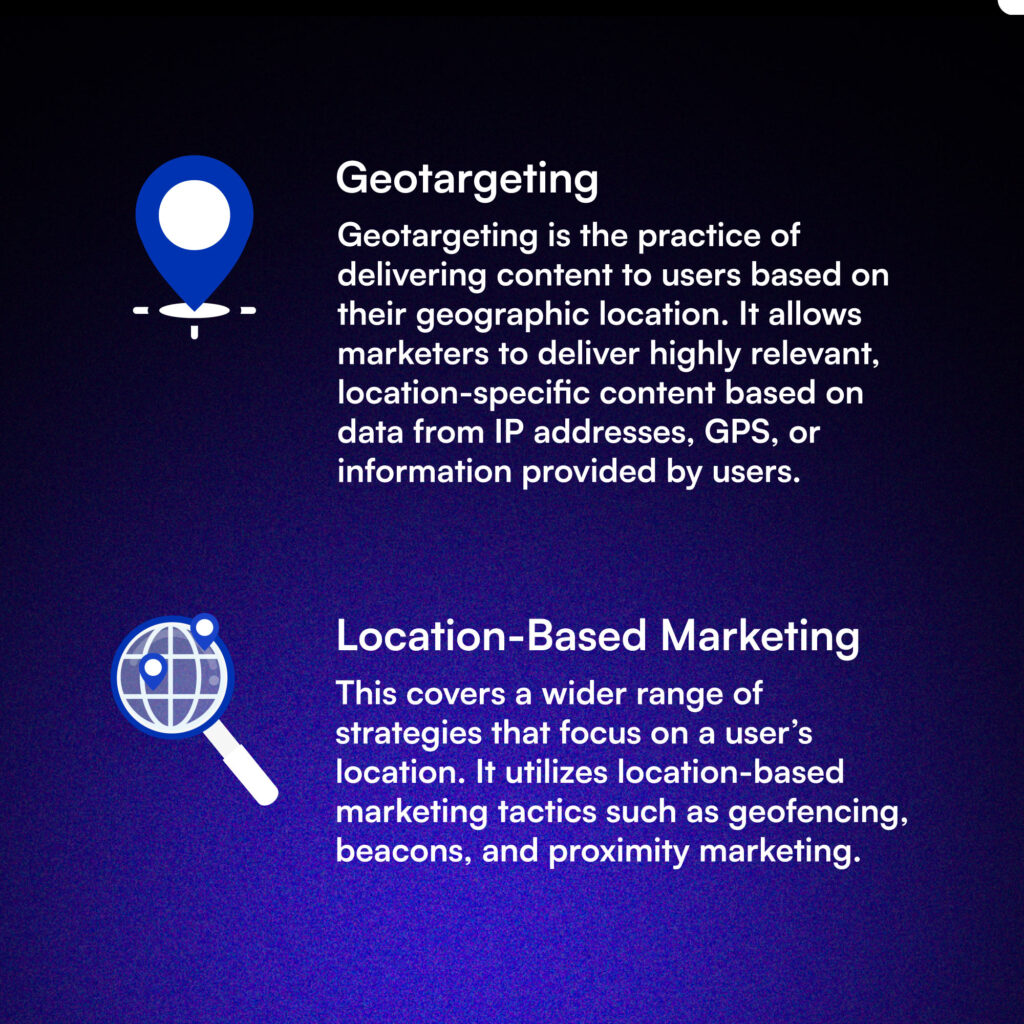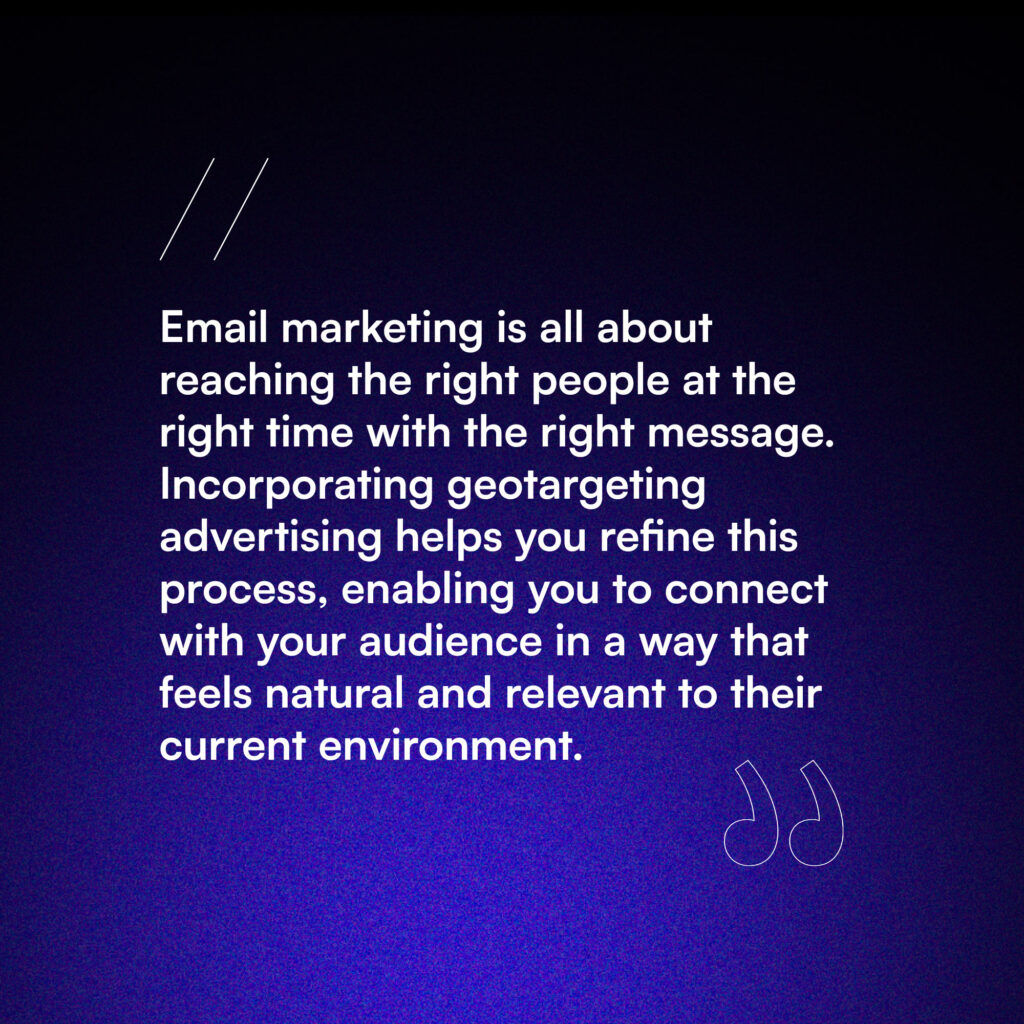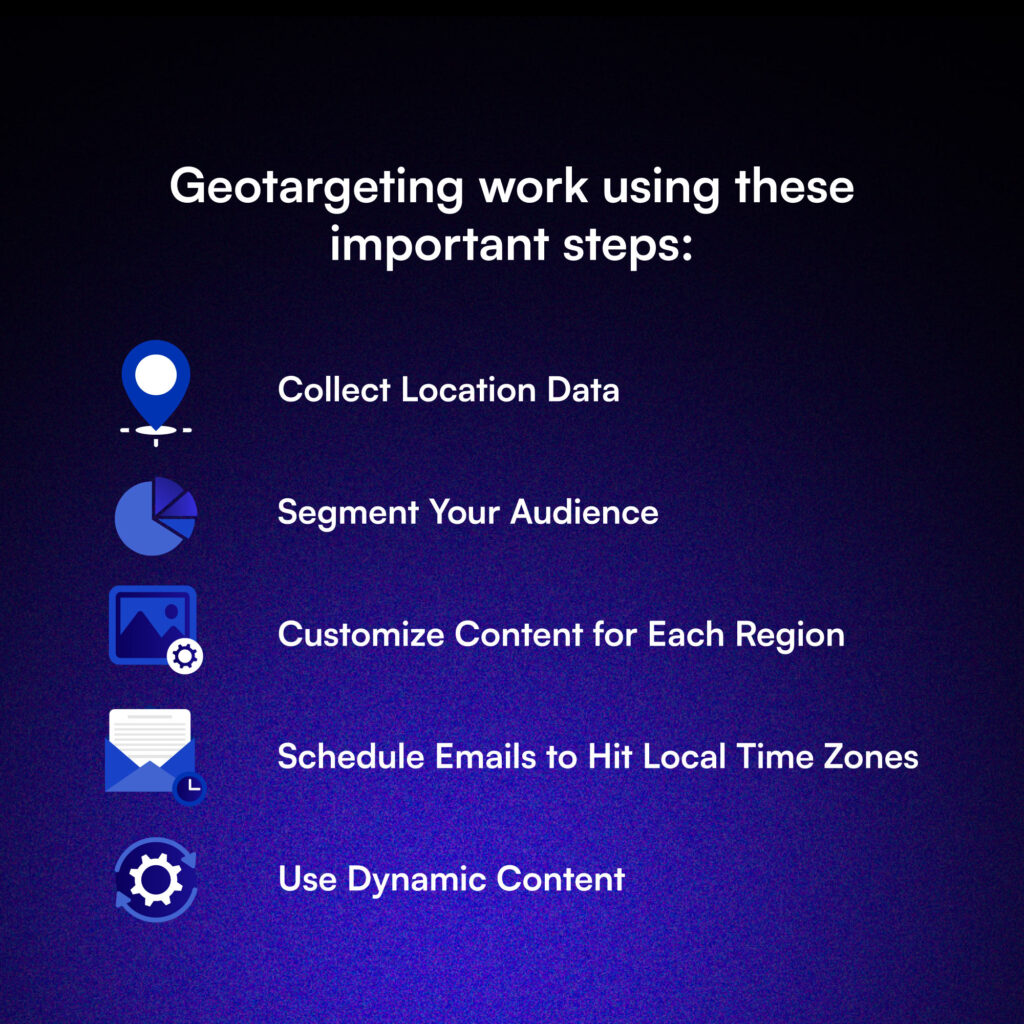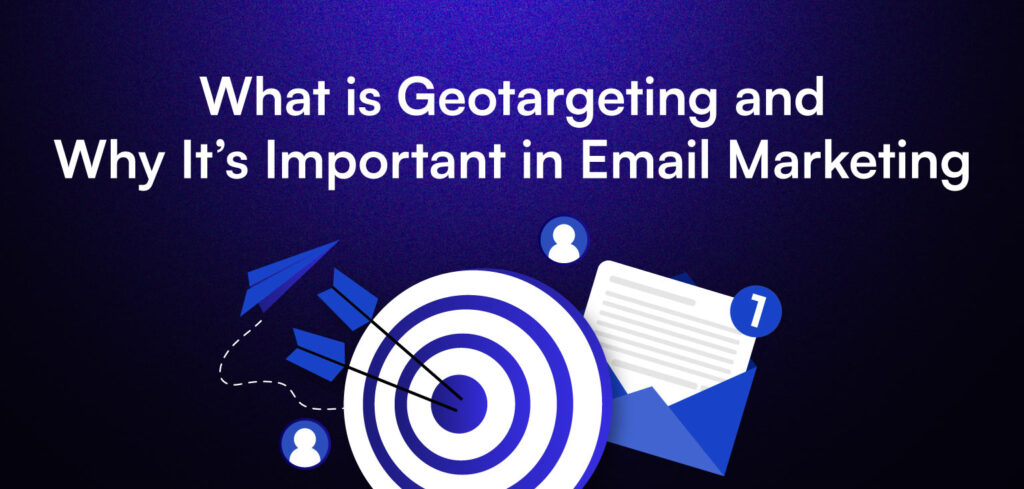Geotargeting vs. Location-Based Marketing: What’s the Difference?
Geotargeting vs. Location-Based Marketing
1. Geotargeting: tailors content based on geographic location, using data from IP addresses, GPS, or user information for targeted messaging.

What Is Geotargeting?
What Makes Geotargeting Effective:
- It’s very relevant: Your messages hit home because they’re directly connected to where the recipient is.
- Higher engagement: When people see content that feels personal and relevant, they’re more likely to interact with it.
- Local flavor: You can highlight local events, special deals, or seasonal offerings that resonate with your audience.
What Is Location-Based Marketing?
- Geofencing: This involves creating virtual boundaries around your physical store. When a customer steps inside this zone, they might receive a special offer or notification about a sale.
- Beacons: These little devices use Bluetooth to send real-time messages to nearby customers. If you’re in a mall, for example, a store could ping your phone with a discount just as you walk past their entrance.
- Proximity Marketing: This method sends targeted messages to users based on their immediate surroundings, often through their smartphones.
What Method Is More Used in Email Marketing?
Why Is Geotargeting Important in Email Marketing?
Geotargeting enhances email marketing by helping deliver the right message to the right audience at the right time, ensuring that content feels timely and relevant to each user’s location.

Here are several reasons why geotargeting marketing is important in email campaigns:
1. Increases Engagement Through Personalization
2. Perfect Timing
3. Location-Specific Offers
4. Driving Local Traffic to Physical Stores
How Does Geotargeting Work?
Incorporating geotargeting into your email marketing strategy doesn’t have to be complicated. Here are some simple steps to get started:
Geotargeting work using these important steps:

1. Collect Location Data
The first step in geotargeting is gathering location data on your subscribers. There are several ways to do this. Many email platforms can automatically detect a subscriber’s location based on their IP address. Alternatively, you can ask for location information directly when subscribers sign up for your mailing list. For instance, you might ask for their ZIP code, state, or country.
2. Segment Your Audience
3. Customize Content for Each Region
4. Schedule Emails to Hit Local Time Zones
5. Use Dynamic Content
Best Practices for Geotargeting in Email Marketing
To make the most of location-based targeting, keep these best practices in mind:
1. Respect Privacy
It’s crucial to be transparent about how you’re collecting and using location data. Make sure your subscribers are aware of what data you’re using and give them the option to opt out if they’re uncomfortable with it. Ensuring that your practices comply with privacy laws like GDPR is also essential.
2. Test and Optimize
Like any email marketing strategy, geotargeting should be continuously tested and optimized. Run tests on different versions of your campaigns to see which offers, subject lines, and images perform best for each location. By tracking these insights, you can continually refine your approach to improve your results.
3. Combine Geotargeting with Other Personalization Techniques
Geotargeting is just one piece of the personalization puzzle. To create a truly tailored experience for your subscribers, combine location-based targeting with other forms of personalization. This includes behavioral segmentation, purchase history, or dynamic content.
Read this next: Email Marketing E-Commerce Tips from the Experts


